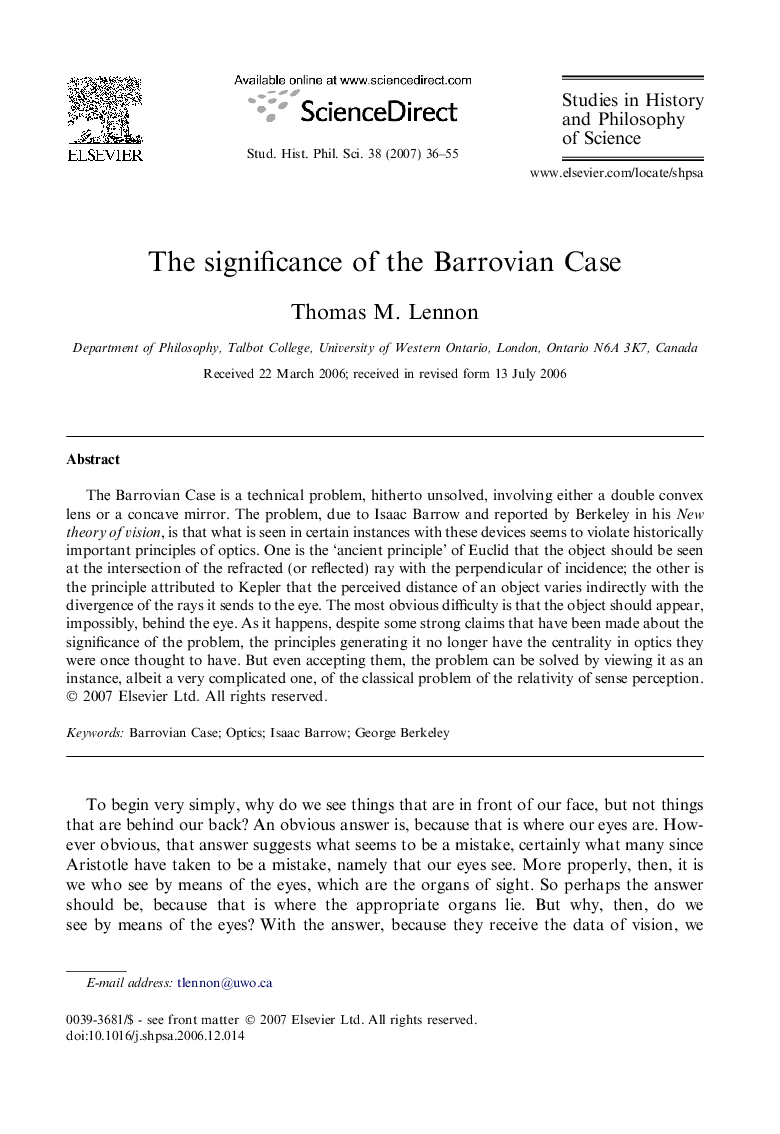| Article ID | Journal | Published Year | Pages | File Type |
|---|---|---|---|---|
| 1160772 | Studies in History and Philosophy of Science Part A | 2007 | 20 Pages |
The Barrovian Case is a technical problem, hitherto unsolved, involving either a double convex lens or a concave mirror. The problem, due to Isaac Barrow and reported by Berkeley in his New theory of vision, is that what is seen in certain instances with these devices seems to violate historically important principles of optics. One is the ‘ancient principle’ of Euclid that the object should be seen at the intersection of the refracted (or reflected) ray with the perpendicular of incidence; the other is the principle attributed to Kepler that the perceived distance of an object varies indirectly with the divergence of the rays it sends to the eye. The most obvious difficulty is that the object should appear, impossibly, behind the eye. As it happens, despite some strong claims that have been made about the significance of the problem, the principles generating it no longer have the centrality in optics they were once thought to have. But even accepting them, the problem can be solved by viewing it as an instance, albeit a very complicated one, of the classical problem of the relativity of sense perception.
